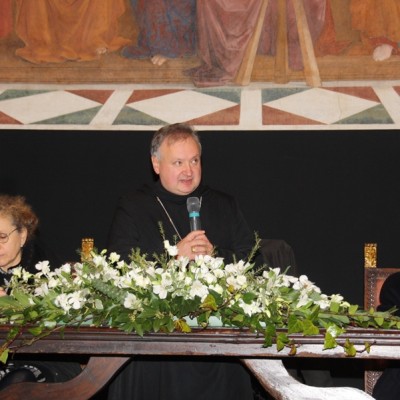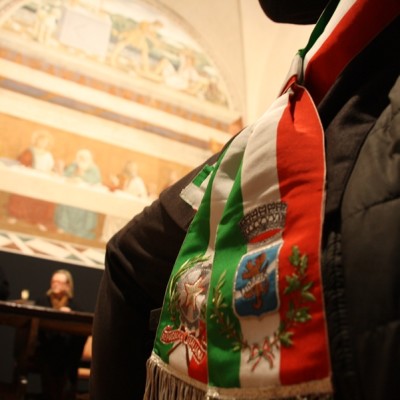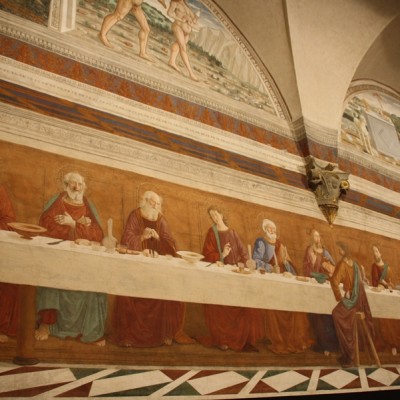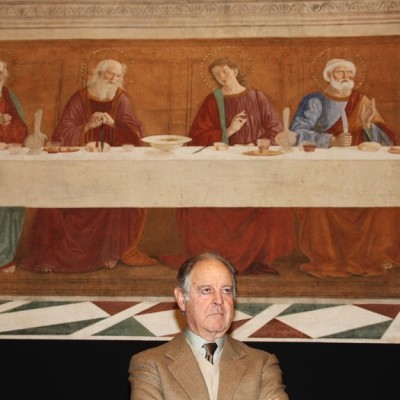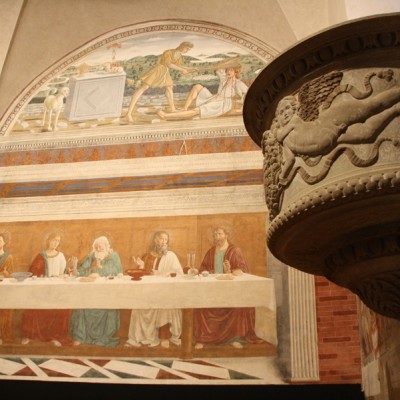Articolo disponibile anche in: Italian
In the Abbey of San Michele Arcangelo in Passignano, in the municipality of Tavarnelle, after a decade of restoration, it’s finally open again to the public the door of the wonderful monastic refectory where the frescoes “The Last Supper” made by Domenico Ghirlandaio are situated. The two scenes painted by Bernardo Rosselli, the pulpit, the stony and ancient marble elements.
In 2002 during the period of restoration works, below the nineteenth century decorations on the other three walls of the room, were discovered more fresco paintings by Benedetto and Cesare Veli that date back to 1598 representing saints and blessed vallombrosani.
A restoration work of great value, edited by the Superintendency of Fine Arts and Landscape for the provinces of Florence, Prato and Pistoia, made by Cellini Company and sponsored by Marchesi Antinori and the American foundation “Friends of Florence”.
The restoration work on “The Last Supper” has increased the value of the pictorial quality of the painting, in particulary about the figures of Christ and the apostles, this can be traced back to the direct intervention of Domenico Ghirlandaio, as evidenced by the archival material consulted and interpreted for the occasion and thanks to the close-up view of work and scientific analysis.
The technical analysis conducted by engineer Nicolino Messuti of Istemi Company (hygrometric analysis, infrared reflectography and X-ray fluorescence) have accompanied the Cellini Company’s restoration works, ensuring the complete removal of repainting and the resetting of the authenticity of what is proposed today to visitors and studious.
Equally important was the regular presence on works and the contribution given by Sabino Giovannoni (employed in restoration laboratories “Opificio delle Pietre Dure” in Florence with significant experience in the restoration of frescoes) to the construction managers Giorgio Elio Pappagallo and Claudio Paolini.
During the period of restoration it was evident how already at that time (in1476) the “Bottega del Ghirlandaio” (method of painting by Ghirlandaio) has defined an operating mode of painting (the various systems to post preparatory drawings on the wall) and in general an organization of the yard fully correspondent to the well documented method of later frescoes in Santa Maria Novella.
